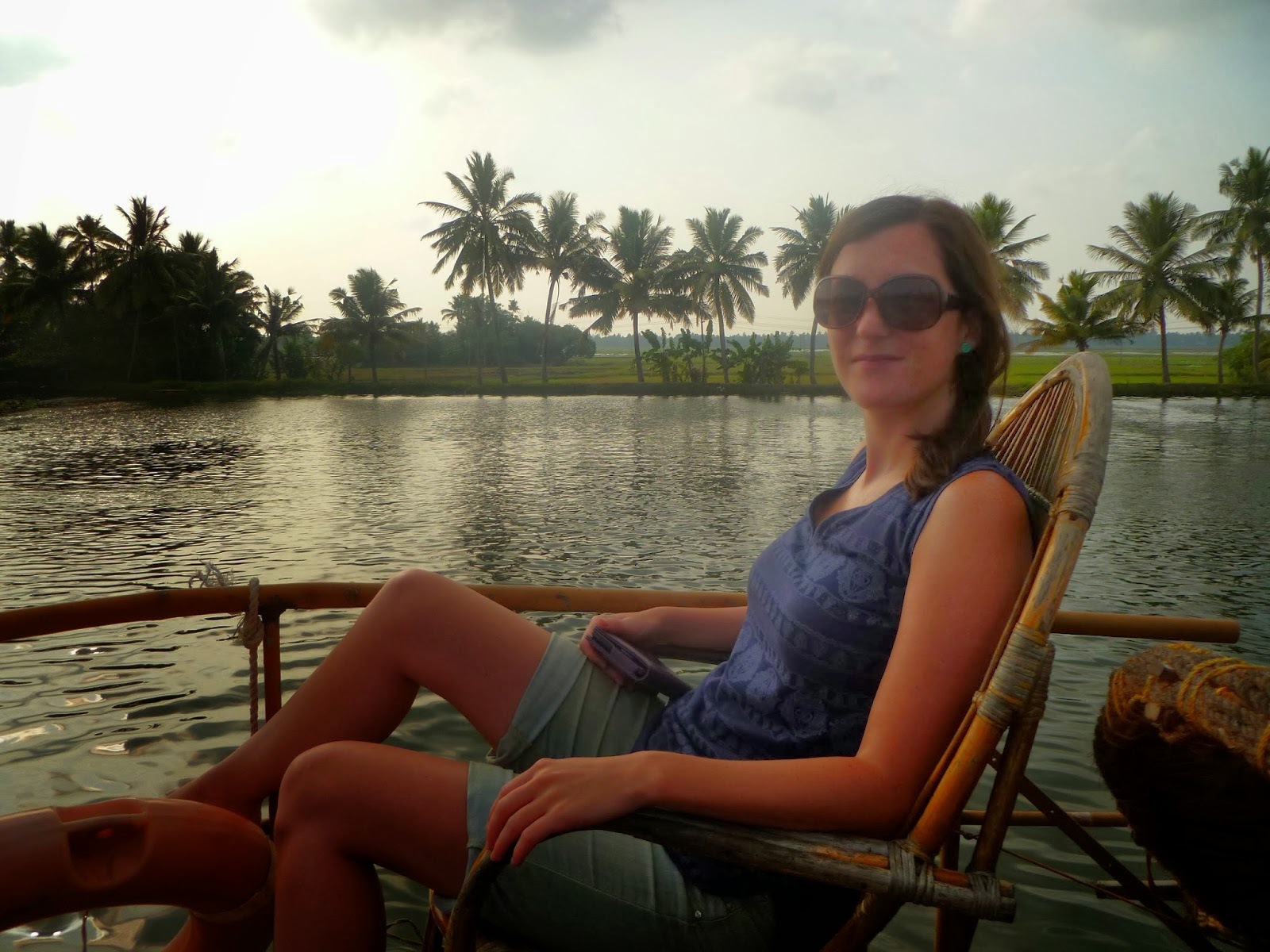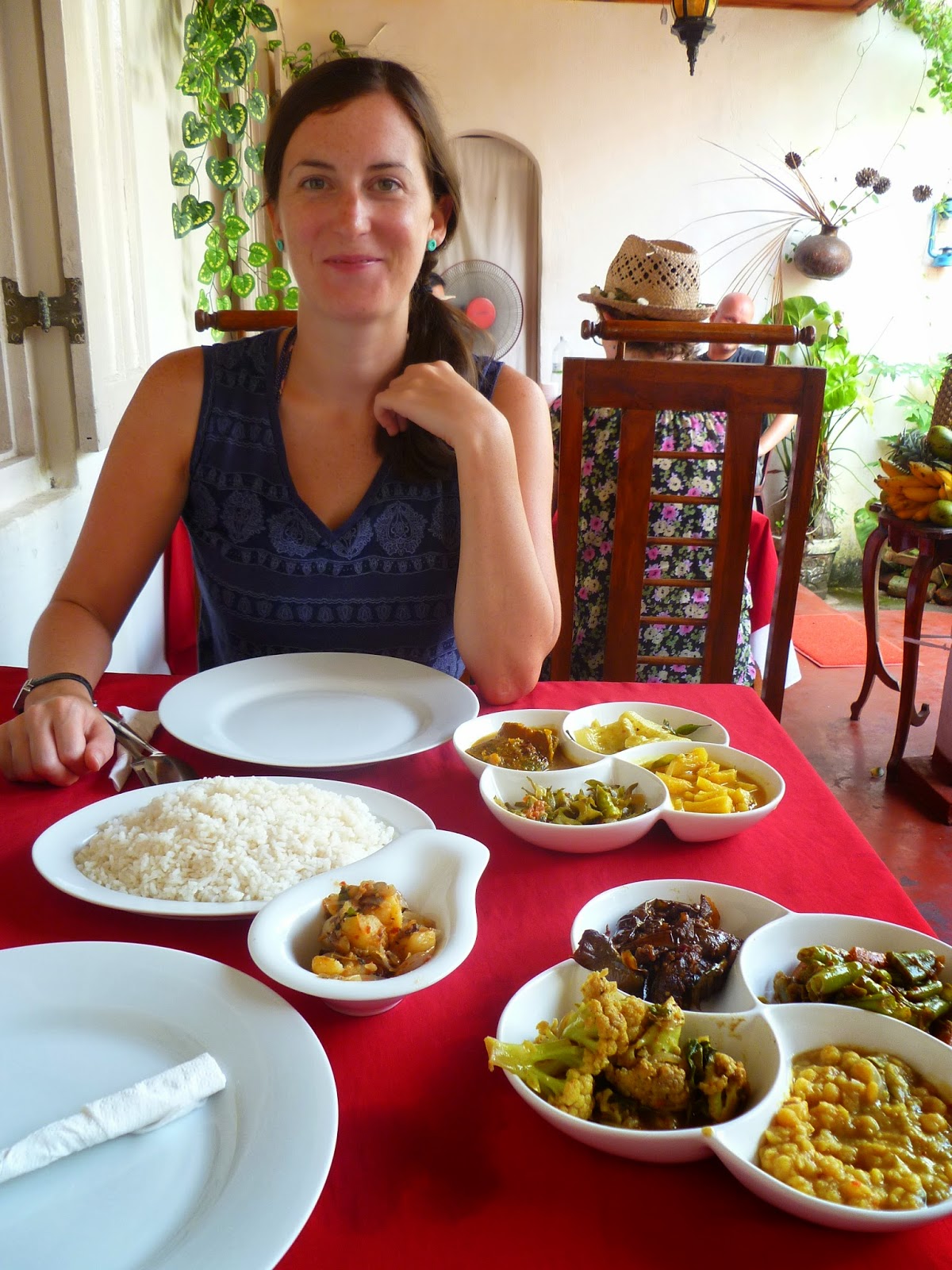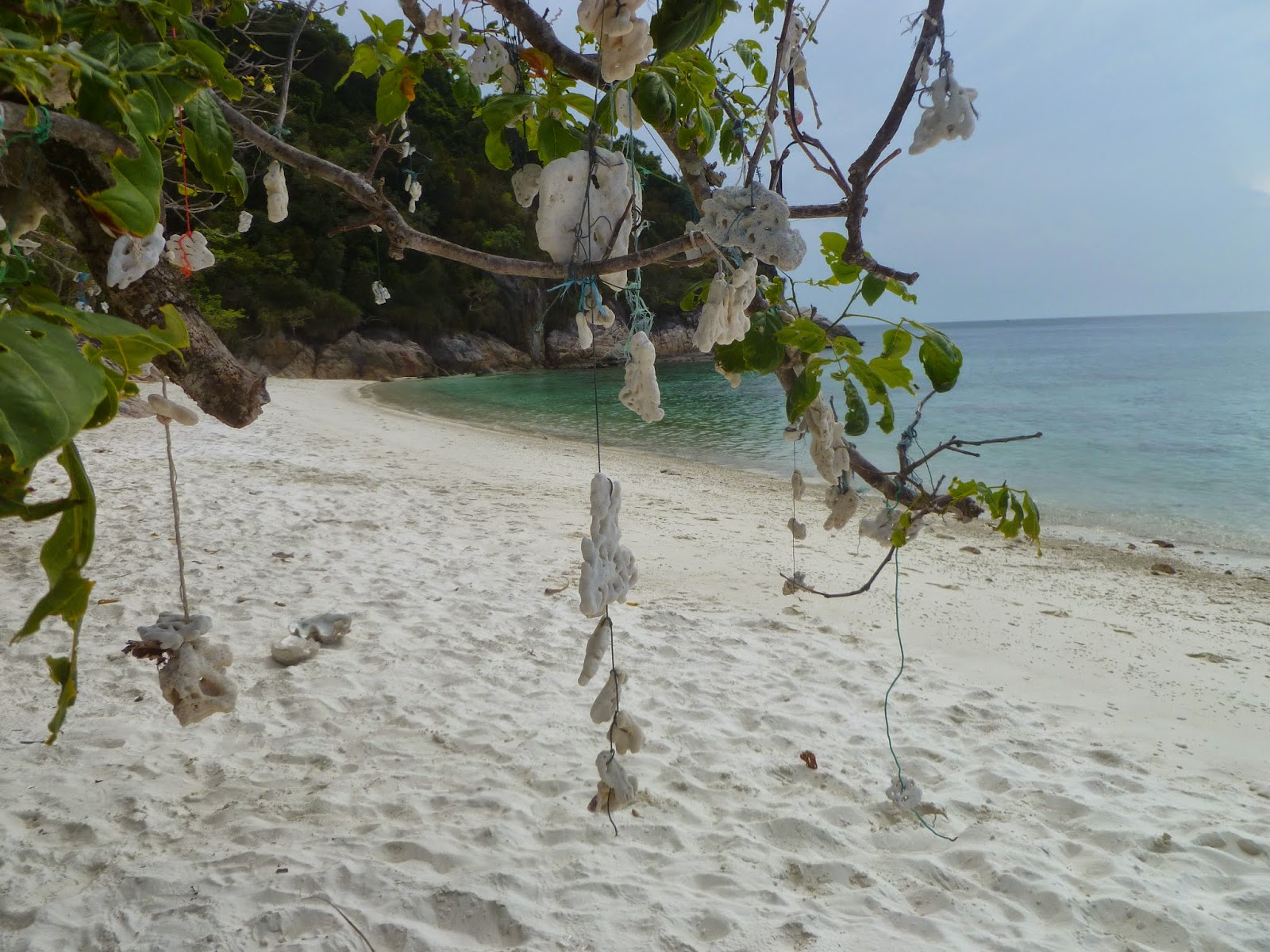Driving The Great Ocean Road is on many a bucket list and not long after arriving in Oz, we just knew we had to do it.
But, after not working for five months, we also knew we needed to do it on the cheap.
When we found ourselves needing to get from Adelaide to Sydney to find work, we decided that, instead of flying, we'd drive the 1,760 kilometres, taking in the famous road on the way.
To save money, we registered with
www.transfercar.com.au which advertises camper vans that need relocating. It means you get a van for free - all you need to do in pay for petrol and relocate it from one city to another. Adelaide's a good place to get a relocation van as it's the end of the road for many travellers who drive The Great Ocean Road (GOR).
Our journey began when we picked up our 1998 Mitsubishi Star named Elvis. It was a bit stinky but overall in good nick. It had two seats in the front, a little kitchenette in the back and a mattress in-between. It was very cosy (read small) but would do the trick.
 |
| Elvis, our 1998 Mitsubishi Star. |
 |
| The kitchen... |
 |
| ..me demonstrating how you can be in bed and have breakfast at the same time. |
 |
| Luke modelling the kitchen stove and equipment. |
We were given a five-day time limit by Elvis' owners, Awesome Campers, to take the van back to Sydney. With 20 hours of driving it was going to be pretty tight.
For anyone interested in taking the same trip, our five-day itinerary from Adelaide to Sydney looked a little something like this:
Day 1 - Adelaide to Portland, 548km, 7 hours
Day 2 - Portland to Princetown, 181km, 2 hours 30 mins
Day 3 - Princetown to Torquay, 162km, 2 hours 30 mins
Day 4 - Torquay to Jugiong, 621km, 7 hours
Day 5 - Jugiong to Sydney, 332km, 3.5 hours
The first day involved an epic seven-hour drive from Adelaide to Portland which was a boring journey with long straight roads and little to see. But we did have a nice pit stop at the beautiful Blue Lake at
Mount Gambier before bedding down in Portland.
 |
| The Blue Lake at Mount Gambier. |
Up early on the second day, we were ready to start the exciting part of the trip. After a quick drive from our campsite we reached
Port Fairy which is a beautiful little town with a port (hence the name) and a really lovely stretch of beach which was deserted the day we went.
 |
| Luke in pretty Port Fairy. |
 |
| Me walking along Port Fairy beach. |
Like many small Aussie towns, there isn't much to do in Port Fairy but we enjoyed a walk along the beach and went into the small town for a cup of tea. Overall it was very quaint and a really lovely start to our second day.
Our serenity was disturbed, however, when we realised Luke had left the van lights on and the battery had gone flat. The local mechanic was just not interested in helping us, but luckily we found a very nice British ex-pat from Wigan who gave us a jump start. Bloody nice people those Brits!
Next we took a lunch break at
Tower Hill Reserve which turned out to offer great views. We took a steep 30-minute climb up Peak Climb and were rewarded with amazing an 360-degree across farmland and the sea. Driving out we also had the hilarity of bumping into a wild emu. These funny native Aussie creatures really do look like something from prehistoric times.
 |
| Pretty view at the top of Peak Climb at Tower Hill Reserve. |
 |
| A wild emu trots on by Elvis. |
Next up was the iconic imagery from the GOR - the rock stacks.
Pulling up to the
Bay of Islands I didn't really know what to expect but was astounded by the beauty of the dramatic coast line. This stretch of sea is well known for it's ferociousness (many ships have fallen victim to these shores) and the stormy skies of autumnal late April.
 |
| The dramatic cliffs at Bay of Islands. |
Our second stop was
London Bridge. Which, when you see it, the reason for its name becomes obvious. As well as being impressive to look at, I also loved the story about how it became a single arch bridge. London Bridge used to join the mainland until one day in January 1990, the bridge collapsed leaving two unsuspecting tourists stuck on the world's newest island. After a few hours they were eventually rescued by helicopter!
 |
| Me at London Bridge. |
By this time it was getting late in the day so we raced along the winding roads to get to the main event:
The 12 Apostles. This is probably the most iconic stretch of the GOR and when you spy these almighty formations it's easy to see why. Having been created by retreating headland, these rocky stacks stand proudly out of sea. Apparently there may never have been 12 stacks, but today there are even less then before - maybe seven - they're still impressive though.
We arrived at sunset which was a bit of a fluke on our part but I would highly recommend seeing this sight as the sun goes down. It's really very magical and Luke managed to snap some lovely photos.
 |
| The 12 Apostles at sunset. Hashtag: no filter. |
 |
| Selfie at The 12 Apostles. |
After sunset we spent a night at the fab and cheap
Princetown Recreation Reserve ($15 a night) where we camped next to a field of kangaroos who we saw have a bit of a boxing match. The more time I spend in Oz, the more I love kangaroos!
It was an early start the next day to take a walk down
Gibson's Steps. These were hacked by hand into the cliff in the 19th century and lead down to Gibson Beach. It was a gusty cold morning and certainly woke us up after a stuffy night in the camper van.
 |
| A morning stroll in Gibson's Beach will wake you up. |
Then it was back on the road through the
Otway National Park which is a rugged and green rainforesty area - very different to the crisp coastline we'd previously driven along.
Back on the sea road, we stopped for lunch at Apollo Bay, a lovely stretch of beach surrounded by rolling hills. It was a bit too cold to take a dip (Australia was unseasonably cold for April) so we took a walk along the sand and observed the very naughty seagulls stealing food from people and harassing each other. They are the same the world over.
Apollo Bay reminded me a bit of beaches in Lincolnshire at it had small sand dunes covered in shrubbery which led down to the beach. Although the water was a lovely blue rather than the poo brown of Skegness!
 |
| Seagulls attacking each other at Apollo Bay. |
Day 3 (going from The 12 Apostles to Torquay) proved to have the most dramatic views from the camper van. The winding roads veer dangerously close to the sea. Elvis proved to be a bit clunky but in an open-top car I can imagine it would be a lot of fun. I only wish it had been a bit hotter so we could have made the most of the amazing beaches and had a swim.
Our last stop along the GOR was
Bell's Beach which is where many huge surfing competitions, including Rip Curl Pro, are held. Surfing folklore also says it's where Keanu Reeves and Patrick Swayzee had their final showdown in the 1991 film Point Break.
We arrived at around 5pm and it was very amusing to see lots of men screech up in their station wagons, pull their surf boards off the top, squeeze on their wet suits and sprint down the steps to the waves below. After-work surfing - the Aussies really do live the life!
 |
| Surfers wait like seals at Bell's Beach. |
After watching the surfers until sundown, that was it, The Great Ocean Road was complete - but we were still 966km from Sydney. So we hunkered down at a campsite in nearby
Torquay in anticipation for an epic couple of days of driving.
I won't go into heaps of detail about our drive from Torquay to Sydney - it was long, boring and just one straight road. We did it over two days so we stopped off in the small town of
Jugiong for a night. We'd read there was free camping and the pub served pizza - and were sold!
Arriving in Jugiong we saw the field of free camping was overrun by horses and after speaking to the locals discovered there was a horse show on that weekend. This meant we shared the field with many horses who 'neighed' their way through the night and left a fragrant smell in the area. We did find pizza in the village pub, the old Sir George, and spent the evening talking to the friendly locals which was fab. I would highly recommend a stop off in Jugiong - it felt like a proper small Aussie town.
The next day it was just a few hours' drive to our new home of Sydney.
Driving The Great Ocean Road on the cheap certainly wasn't easy. It's a tourist trap designed to make you part with your cash but getting Elvis for free made it much easier.
I'm so pleased we decided to drive from Adelaide to Sydney instead of fly. It felt like one last travelling 'hurrah' before we settled down. Back in the real world.
USEFUL INFORMATION ABOUT TRAVELLING THE GREAT OCEAN ROAD:
Accommodation/camp sites: We had hoped to free camp along The Great Ocean Road but this proved to be more difficult than we first thought. There were signs in every car park and large areas of land to say if you were caught camping there you'd be fined $250, so we wimped out and paid for camping, apart from in Jugiong. Here's where we stayed and what we thought:
Portland - Henty Bay Beach Front Park, $25 a night, Tel. 0355233716, info@hentybay.com.au - lovely location on the beach with generous unpaired and powered pitches. Would recommend.
Princetown - Princetown Recreation Reserve, $15 a night,
Princetown Recreation Reserve, 99 Old Coach Road, Tel. 0429985176, princetownrecreationreserve@gmaiprincetownl.com - really good value and super close to The 12 Apostles. Would highly recommend.
Torquay - Jan Juc Cravan Park, $30 a night, Tel. 0352612932,
info@janjucpark.com.au - this was probably the worst value. The pitches were really far from the toilets and it was in a strange location.
Jugiong - Just head to the Sir George pub and the free camp site is just up the road. There are toilets but no showers. But for free it's the best value we got all week!
Eating and drinking: To save money we mainly cooked using the camping stove, apart from the lovely pizza at the Old Sir George in Jugiong
www.sirgeorge.com.au, Tel. 0269454207
Petrol costs: In total from Adelaide to Sydney, going via The Great Ocean Road, we spent $305 in fuel. This is only marginally more than two one-way flights with excess luggage (which we had) so it's a super-cheap way of travelling if you can get the camper van for free.


















































